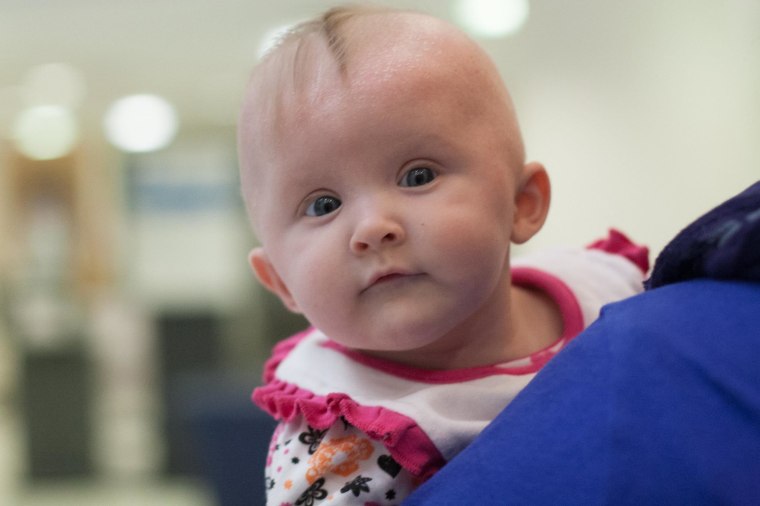Seven cases of a rare fatal birth defect were reported in a remote region of Washington state in 2013, making it the fourth consecutive year that rates have more than tripled the national average, health officials said Tuesday.
There’s still no clear reason for the spike in anencephaly, a severe defect in which babies are born missing parts of the brain or skull, according to Washington state health officials. NBC News investigated the issue in February.
But it brings to 30 the number of cases reported since 2010 in the area that includes Yakima, Benton and Franklin counties in central Washington state. The anencephaly rate jumped to 8.7 cases per 10,000 births in the region, far exceeding the national rate of 2.1 cases per 10,000 births.
"We're really concerned about the fact that the anencephaly rates are still so high," said Mandy Stahre, an Epidemic Intelligence Service officer with the Centers for Disease Control and Prevention based in Washington state. "We were sort of hoping that this may have been a statistical anomaly or would go away."
State and federal officials plan to convene an advisory committee of national experts to review options for investigation and prevention, Stahre said. Next month, they'll hold “listening sessions” in the community to hear public concerns about the rise in birth defects in the region.
"The community members, they live here," Stahre said. "They may be seeing things that we don't."
But that hardly seems like enough, said one mother whose baby was born with spina bifida last year and was considered part of a cluster of cases of neural tube defects in the region.
“It’s good that they want to know everybody’s thoughts, but what are they doing about it?” said Andrea Jackman, 30, of Yakima. Her daughter, Olivia, is 7 months old.
“Why are they going to put the time and money into chatting with people who don’t know? Do the research.”
Stahre said one of the goals of the advisory committee will be to decide what focus future investigations should take.
"Do we go back and look even further back? Or do we just focus on current conditions and looking foward," Stahre said.
The new count follows a report last summer that found more than two dozen cases of babies born with anencephaly and other neural tube defects in the region between 2010 and 2013.
Researchers found no geographic, seasonal or other type of pattern to the cases, Stahre said.
Medical records indicate low rates of folic acid vitamin supplementation in the region, which has been linked to anencephaly. Other studies have shown ties between the defect and exposure to molds and pesticides. Critics have said state and federal officials need to do detailed interviews and a thorough investigation of the central Washington cluster.
Many local residents are convinced that leaking tanks of nuclear waste from the region’s nearby Hanford nuclear plant must be to blame, but Dr. Edith Cheng, a University Washington Medicine expert on birth defects, said there has not been a good evaluation of the plant’s impact on anencephaly or other problems.
Experts emphasize the need for all women of childbearing age to take folic acid supplements.
